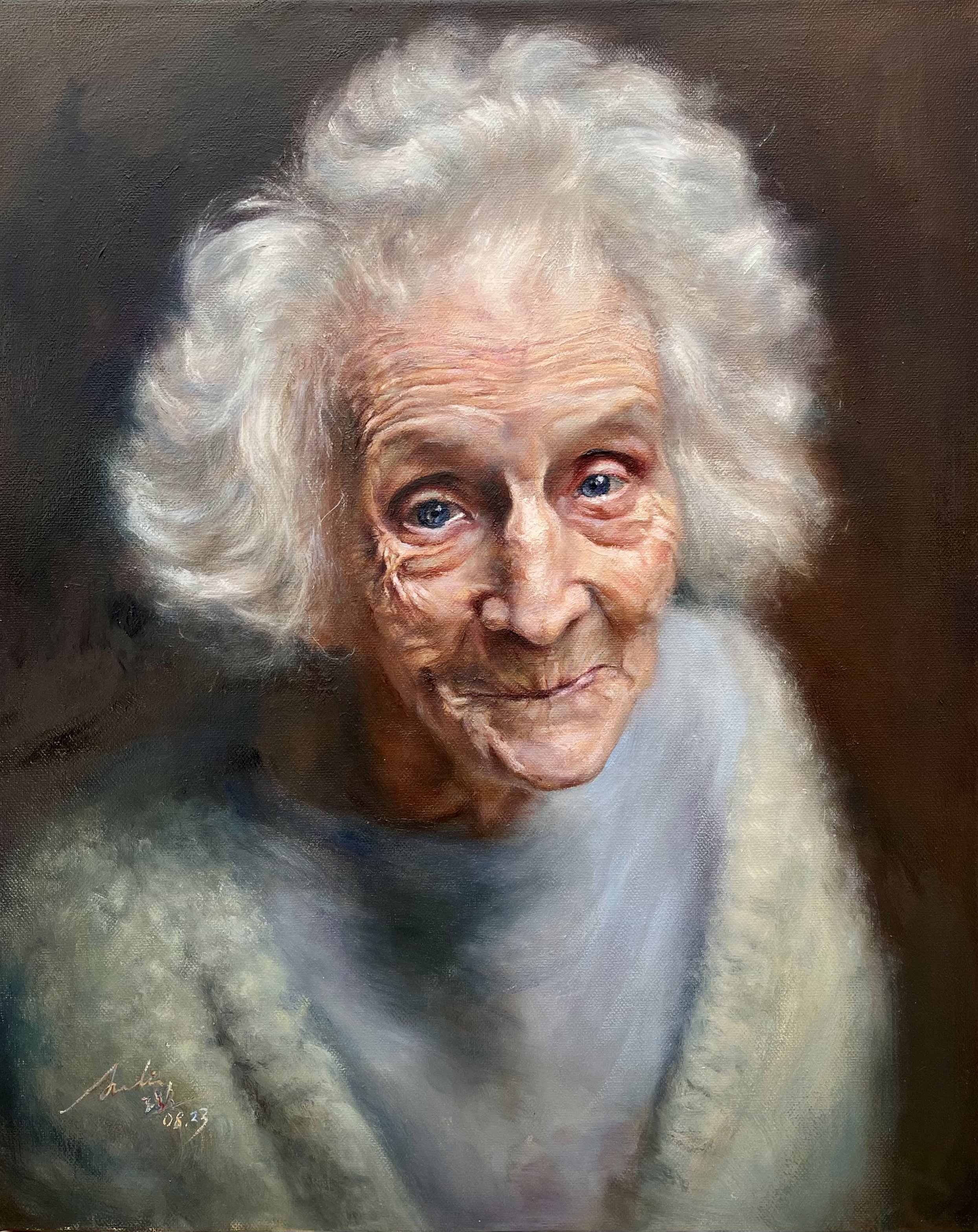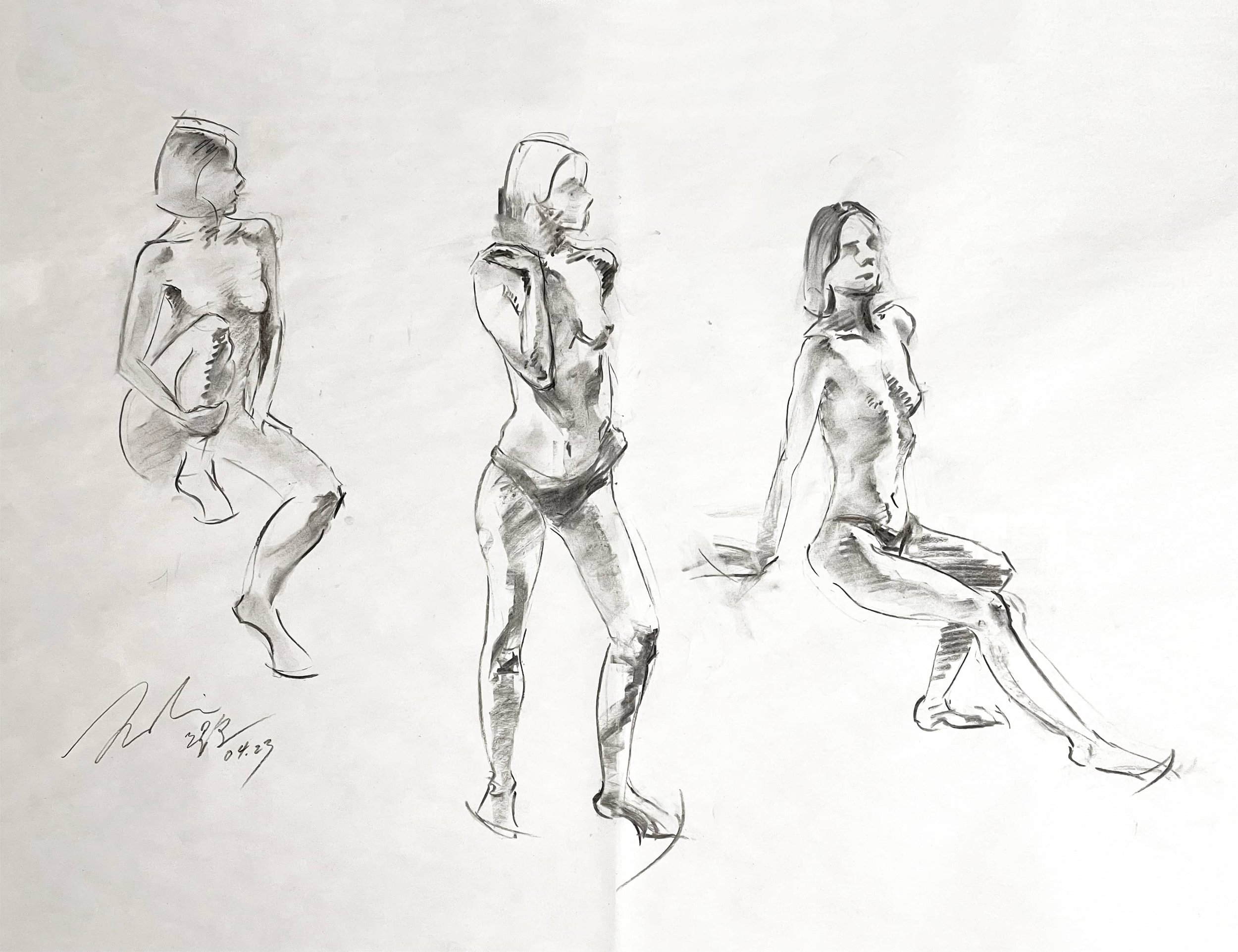Artist Julia Wang
Congratulations to Julia Wang for earning her place as a Finalist in the Boynes Artist Award 9th Edition [Young Artist category]!
Who are you?
I am a Melbourne-based artist who primarily works with oils and charcoal, though, as I am still currently in high school, experimentation is essential to my artistic development. I love working in photography as well as integrating various printing techniques as part of my textile works. Art has always been a vital way of my self-expression. A distinct moment which sparked my infatuation with visual arts is probably an arts and crafts workshop my mother took me to when I was three. Specifically, visions of the caterpillars we made together out of origami paper and chenille stems emerges out of the depth of my memories. I realise now, that was the first moment I felt the joys creating brought.
In school, I was always (and still am), ‘the art kid’. Nothing made my day more than walking into the art room to the sight of newspaper and paints. Throughout high school, as I increasingly begin to be in-touch and validate my individual identity, I am ever so set on chasing after three-year-old me’s dream of pursuing visual arts.
Technique is the ground foundation which upholds my art making practice, whether that’d be technique in drawing, painting or other, like garment construction. I truly believe that in order to have complete freedom, a certain degree of technique must be acquired first. Thus, I began my journey of constantly developing and refining my technical skills, at the same time, training myself to be more sensitive, not only to the art elements and principles, but to the world around me. For me, making art is the process of experiencing, connecting, reflecting and expressing the human condition. Art making is a process of development for one's inner soul, it’s a reflection of human nature. What better way to experience my life than spending it doing exactly that. Thus, in the journey of refining my practice, I hope to do so in tertiary education next year.
“Still”
oil on canvas
By Julia Wang
What inspired you to utilize painting as a medium?
I chose to use oils, as it is a challenging yet rewarding medium which is flexible on so many levels. Choosing painting as my artform for the project was also to further develop my techniques and understanding of the traditional paint medium.
“Memories of laoye”
gouache on wooden board
By Julia Wang
CAN YOU DISCUSS THE INSPIRATION AND THOUGHT PROCESS BEHIND YOUR WINNING WORK?
苍 Ethereal is an ode to the joy and acrid that is life. I only hope to spark, even just a little, of solidarity and a sense of connection for the audience. My inspiration behind 苍(Ethereal) was my grandmother, as well as the close matriarchy within my household. The subject depicted is not my grandmother, but embodies her in every way. I wanted to encapsulate a sense of innocence and perhaps even cheekiness, furthermore, of wisdom and compassion through the subjects’ gaze and aura.
“苍 Ethereal”
Oil on Canvas
By Julia Wang
Can you walk us through the technical steps of creating winning work?
I first laid down a ground layer very loosely, so when I got to putting down the first layer of colour and forms, I could work in quite a ‘sculptor-ly’ manner. This set a very loose and free mentality for the rest of the painting process. As the facial structures were established, I layered various hues and used different brushes/ techniques to achieve the visual effects I wanted. The main technical goal was to precisely convey the characteristics of each element, the silkiness of hair, the fluffiness of woollen jumper, and transparency as well as flexible qualities of human skin.
Can you talk about your biggest learning experience during the process of creating your work?
As a young artist who is only at the tip of my career, I am constantly learning with each project. With every painting that I do, I experience a process of fluctuation, of stumps and confusions to the satisfaction of finding solutions (and repeat). 苍 Ethereal particularly, was my first time finishing a portrait to this extent. The biggest concept I learnt during the making of 苍Ethereal is the power of blurring, in turn, how harsh and soft edges can be juxtaposed to create depth and dimensions. Whilst emphasising the chin and wrinkles close to the core shadow line, yet deliberately blurring the clothing and right hand side, I was able to convey the space around and behind the subject. I discovered the idea of push and pull to create rhythm and retention in the work.
“untitled”
oil on canvas
By Julia Wang
Can you share with us the best piece of advice you have received so far?
The best advice I had ever received was from my art teacher, “to stay grounded”. Approach every piece of painting with an open heart and be prepared to end up with something different to what was set out, think of every project as a learning opportunity. Naturally, your acquired abilities will come through, however, steer clear from imposing a certain idea of ‘what it’s going to look like’.
“untitled”
willow charcoal on paper
By Julia Wang
What projects are you working on currently? Can you discuss them?
In the midst of finishing Year 12, I’m constantly working on self-directed projects for uni application folios. One of which is an exploration of my cultural identity within the Australian context, titled: Chinadoll. Growing up Chinese Australian, like many others I have experienced the losing of my self-identity while contending with my cultural heritage. The piece also encapsulates the portrayal of Chinese culture in the West, including the hyper-idealisation and romanticisation of ‘oriental’ beauty. It is a capsule of my journey of coming to terms with myself, place, and value in our progressively fast-paced society.
“The Beauty in Their Eyes ”
Willow charcoal on paper
By Julia Wang
Lastly, I like to ask everyone what advice they would give to their fellow artists, what is your advice?
For people starting out just like me, similar to the advice I was given, to approach every painting with a grounded sense and open-mind. Though you might have a certain technique or process which works and is distinct of your practice, be prepared to experiment and follow the natural developing path of the artwork- maybe new things will be discovered along the way.








